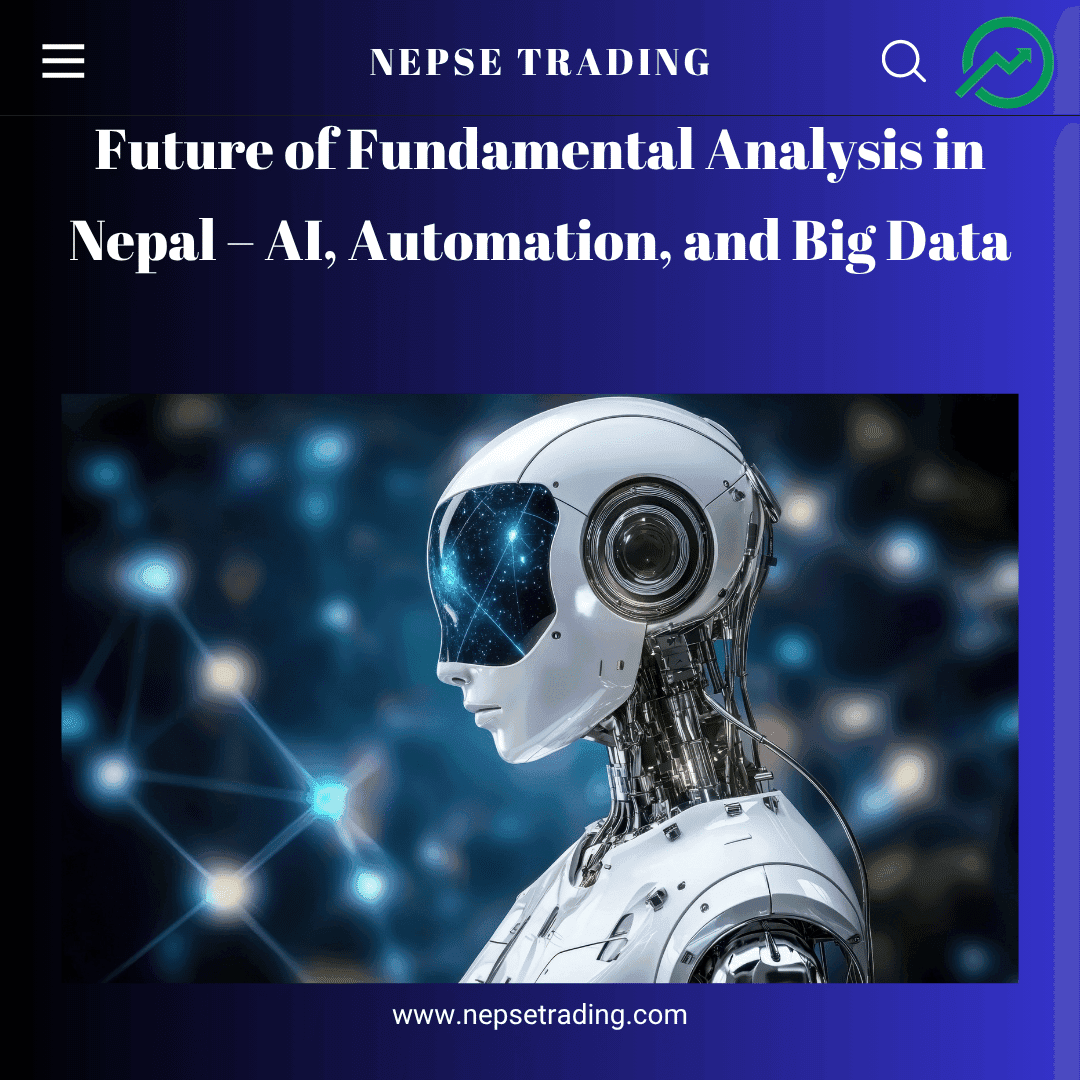By Sandeep Chaudhary
Future of Fundamental Analysis in Nepal – AI, Automation, and Big Data

The future of fundamental analysis in Nepal is rapidly evolving as Artificial Intelligence (AI), automation, and big data analytics begin transforming how investors and analysts study the Nepal Stock Exchange (NEPSE). What was once a manual process of reading balance sheets and comparing ratios is now shifting toward data-driven decision-making powered by algorithms that can process thousands of data points within seconds. This digital transformation marks a new era for financial research, where speed, accuracy, and predictive insight will define success.
AI and Machine Learning (ML) are set to revolutionize how investors evaluate company fundamentals. Advanced algorithms can now analyze financial statements, detect patterns in earnings growth, identify anomalies in cash flow, and even predict future profitability using historical and real-time data. For NEPSE, this means that investors will soon be able to forecast stock movements and intrinsic value changes faster and more accurately than ever before.
Automation plays a key role in streamlining repetitive analytical tasks such as data entry, ratio calculation, report generation, and trend visualization. Automated dashboards can instantly update after each company’s quarterly or annual report release, saving hours of manual work. This makes it easier for analysts to focus on interpretation and strategy rather than routine calculations.
Meanwhile, big data analytics is transforming how macroeconomic and sectoral insights are extracted. With access to data from the Nepal Rastra Bank (NRB), Central Bureau of Statistics (CBS), and other open data sources, AI-powered systems can correlate NEPSE movements with changes in liquidity, interest rates, remittance inflows, or inflation trends. This helps analysts understand not just what is happening in the market, but why it is happening.
Future platforms will integrate AI screeners that can rank companies in real-time based on growth quality, governance standards, and valuation strength. Investors will also be able to use Natural Language Processing (NLP) tools to analyze company reports, news, and management commentary automatically — identifying red flags or growth opportunities instantly.
In the coming years, Nepali investors trained in data science and financial modeling will gain a significant edge, as they will be able to combine AI-driven analysis with human judgment. Institutes like the NepseTrading Training Institute, led by Sandeep Kumar Chaudhary — Nepal’s foremost Technical and Fundamental Analyst — are already integrating automation and digital tools into their curriculum. As he notes, “AI will not replace analysts; it will empower them. The ones who know how to use technology will define the next generation of investors.”









